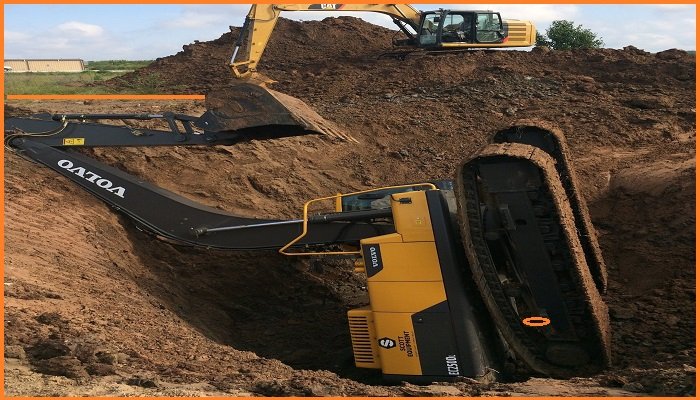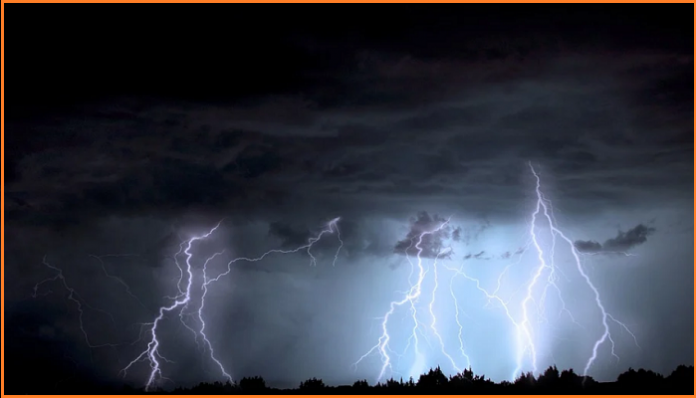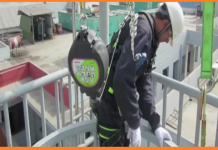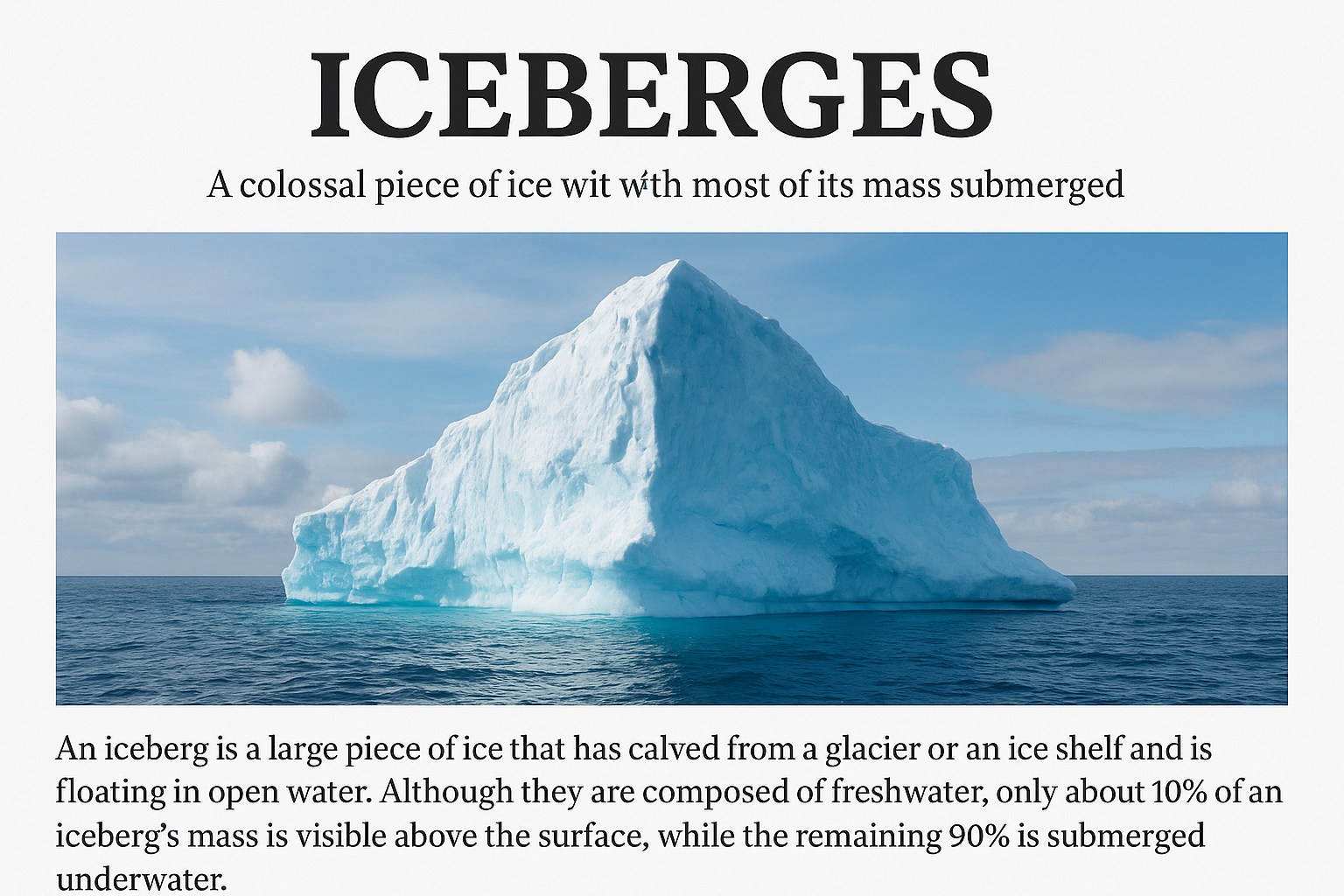Monsoon is one of the oldest weather observations, an economically important weather pattern, and the most anticipated weather event and unique weather phenomenon. Yet it is only partially understood and notoriously difficult to predict.
The unique geographical feature of the Indian subcontinent, along with associated atmospheric, oceanic, and geographical components, is extremely influential in ensuring the anticipated behavior for monsoon in the Indian subcontinent. It has a significant impact on the overall well-being of subcontinent residents.
However monsoon brings several difficulties, events i.e. downgraded situations like heavy rainfall, flood, lightning, cyclone which may demand the safety precautions at high priority.
Contents
PURPOSE
The purpose of this Monsoon Safety Plan Construction site is to provide guidelines to encounter seen and unseen hazards in the Monsoon seasons.
Everybody knows that the monsoon is on the way. This change in the weather is always welcome but monsoon seasons have its own potential hazards. Most of the hazards can be prevented by taking some extra care during monsoon season.
Here are some safety tips to encounter the hazards during the monsoon.
MONSOON PREPAREDNESS AT CONSTRUCTION SITE
The general precautions for monsoon season at the construction site are listed below:
Provide preventive measures and guidance to project management, employees, contractor employees, and visitors. It focuses on the Loss/ damage control measures and the management systems in mitigation and prevention.
Realizing the potential hazards of rain in:–
- Use of electricity and electrical appliances
- Working at heights
- Operations with heavy equipment and machinery
- Slips and falls
- Civil works (excavation & trenching)
- Access and facilities at camps,
It is advisable to recheck our systems and practices prior to monsoon as part of preparedness.
GENERAL SAFETY PRECAUTIONS DURING MONSOON
Following steps shall be followed:
- As a prediction of windstorm and thunder shower, project team shall keep abreast of weather conditions through local electronic and print media and disseminate the same to the concerned.
- Maintain an updated list of telephone numbers and contacts for local offices , meteorological dept. of emergency preparedness including the local media system and other essential utilities etc.,
- Arrange backup communications, such as two-way radios or cellular phones, and have spare batteries and back up power/ emergency generators on site accommodations.
- Identify any existing large earth dump that could fall and damage buildings, installed pipes, mobile welding equipments, fire pumps or power and communication lines.
- Ensure all water drains are clear from blockage.
- Emergency guidance in case of flood , earth slide etc, is to be addressed in emergency plan
- Predetermined access to all offices, client/EPMC/TPI office, camps, facility areas, sewage browsing trucks, drinking water tankers, fire tenders etc to be reviewed and ensure that these are well raised (without hindering the water drainage).
- Repairing and securing all roofs at office, client/EPMC/TPI office & camps, dining areas to avoid any leak and flying of roof sheets.
- Designate an emergency response team and a supporting crew for emergency maintenance of port cabins access, drains and related activities.
- Ensure excess earth material is removed from ROW and leveled properly.
- Identify all critical areas of the facility, and make sure at least one identified person knows the proper electrical shutdown procedures and is authorized to implement them round the clock (All shifts).
- All hazardous waste storage areas to be covered. Arrange to dispose as much waste as possible before monsoon.
- Proper bund wall / dyke around the fuel & oil storage area (if not permanently there) to avoid any runoff.
- Arrange enough emergency food supplies in stock for a week’s period and maintain the inventory throughout the monsoon season. All food items shall be stored in elevated areas.
- Keep enough potable water stored.
- Test preparedness by Scheduled/ unscheduled visits to the vulnerable area.
ROAD (TRANSPORTATION) SAFETY DURING MONSOON.
- The entire vehicle should be fit for the monsoon season. Carry out pre-monsoon checks like wiper, headlights, horn, reverse horn, tyre condition, brake etc. These should be in good and working condition.
- Accelerate your vehicle gradually, anticipate sudden stops, and avoid sudden braking as that could lead to skidding of the vehicle.
- Drive very carefully through the flooded area. Do not take the chance of driving through the flooded areas if the pool of the water is more than the height of the tyre. You may encounter unseen hazards like open manhole, muddy area or trench, undulation or other objectionable objects etc.
- If visibility is poor due to heavy rain or fog then the parking light or headlight must be ON. Drive at a controlled speed. Lower visibility requires higher concentration.
- Look out for pedestrians, hand cart pullers and cyclist,s etc on the road.
- Do not park vehicles on the road during rain. If it is necessary then the vehicle may be parked on the left side with parking lights on.
- Drive in the Lane. Do not drive the vehicle on the wrong side.
- Fasten your seat belt
- Do not overload the passenger transportation vehicles.
- Do not allow anyone to travel on trucks and back deck of the trailers along with the materials.
- Ensure the roads are safe to transport heavy materials.
- Follow road traffic rules.
SAFETY PRECAUTIONS DURING ELECTRICAL WORKS

- Do not touch the electrical cable or wire with bare hand whether it is alive or dead.
- Do not attain any electrical work or electric connection if you are not a competent electrician.
- Do not insert naked wire in the socket.
- Do not use damaged or more jointed electric cable.
- Check all the cable joints and connections frequently.
- If your body is wet or floor is wet, do not touch the switch board or any other electrical equipment, it may give you electric shock.
- Rain water seeps through roof /ceiling or through window opening in the house can result in short circuits, flashover resulting into household fire.
- Lay all power cables overhead/ over the ground. Avoid power cable joints. In case cable joints are required, provide the standard insulations and keep the cables rigidly away from direct exposure of monsoon / water logging.
- Ensure proper earthing of each and every electrical appliance. Double earthing to be provided to all three-phase power supply, distribution boards and/or voltage exceeding 230 volts.
- Provide weather proof covers/ rain hoods on electrical installations, DG’S and welding generator set/ rectifiers.
- All the electrical loads will be routed through Residual Current Circuit Breaker (RCCB)/ Earth Leakage circuit Breaker (ELCB).
- Keep battery operated lights in condition to meet the emergency.
- Ensure use of safety material/PPE such as insulated platforms, safety shoes, rubber hand gloves etc, if there is need to touch electrical installations.
SAFETY IN MAIN LINE OPERATIONS DURING
There are many safety hazards during mainline operation in monsoon. Some hazards can be seen and some are unseen. Hazards in the mainline operation depend upon the activity being carried out and working location.
- Do not carry out the welding in direct rain.
- Check proper earthing to the job and welding machine.
- Ensure that all welding cables grinding cables have good insulation and joint less or not damaged. If any cable is damaged then change immediately.
- Wear safety shoes at all time.
- Do not use wet hand gloves during welding and grinding.
- No naked wire shall be inserted in socket.
- Use protective clothes for protection from rain.
- Beware during lifting and shifting of material because due to wet surface slip, trip and fall hazard may be there.
- There are chances that vehicle may stuck in the mud.
- Beware of overhead electrical lines.
- There are chances of collapsing of pit, trench during crossing work, lowering operation or tie-in operation.
- Proper slope shall be given during trenching to prevent collapse of the trench. If water seeps into the trench then continuous dewatering shall be carried out.
- Suitable ladder shall be used for the safe and easy access aggresses for the trench.
- When leaving the site after completion of work or shift, cover all welding sets, DG sets including silencers with waterproof sheets.
- Ensure that the grinding machine is not wet during use.
- Keep your vehicle equipment at least 1.5 mtr away from trenches.
- Pipe laying, lowering shall be planned in day lights and clear weather time as far as possible.
- Close communication and coordination required during tandem lift or lowering operations.
SAFETY PRECAUTIONS IN EXCAVATION

- Protect the edges of the excavated trenches, foundation pits etc. by hard metal / wooden barrier or with suitable fencing. Display appropriate warning signs, warning tape, reflective tape & flickering / revolving red light (if required).
- Keep the excavated earth away from the trenches /pits.
- Backfill all minor and major excavated trenches / pits which are not required for site execution.
- Barricade the trenches / pits required for execution immediately.
- Check the excavation before & after rain.
- If water is accumulated in the dug trench/pit, dewater the trench/pit by the certified pump which is been run by the electrician taking all necessary precautions.
CLICK HERE FOR 👉 EXCAVATION SAFETY
CLICK HERE FOR 👉 EXCAVATION NEAR-MISS
SAFETY PRECAUTIONS WHILE WORKING AT HEIGHTS
- Do not work on the scaffold during heavy rain
- Do not keep any loose materials (GI sheet, wooden plank etc.) on the higher elevations of the structure, tanks, and work platforms.
- Ensure all external scaffoldings are erected in vertical, provided with sole plate, base plate & tags by a competent person.
- All scaffolding to be inspected daily and after the rain before climbing to work.
- Ensure proper edge protection at higher elevation.
SAFETY PRECAUTIONS IN EQUIPMENT OPERATION
- Inform all the drivers / Operators about the safety precautions while moving the equipment.
- Do not keep transport vehicles in low lying areas at night hours.
- Secure lifting loads and never over speed the equipment in rain.
- Never operate any equipment if the water level is high or water current/ flow of water is more.
- Do not move the chain mounted equipment close to the excavated trench/pits, barricaded areas.
- Do not accelerate the engine speed when you notice the tire got trapped /slipped in mud.
- Do not drive in unknown water logged areas.
- Use mud mat sills / pads to overcome equipment from slips/getting stuck.
- Do not drive heavy equipment, crane in the back filled areas without precautions.
- Never drive (LMV, HMV, Cranes, equipment) in the unleveled area immediately after the rain.
- The booms of all cranes shall be lowered and secured, if the wind speed is too high (greater than 25km/hr) / at nights.
- Do not work in the close vicinity of Over head power line.
- Do not work outdoors if there is lightening.
- No one should rest/sit under the equipment’s.
- Power Generators, welding DG & other equipment’s shall be kept in the higher elevation to avoid water entry.
SAFETY PRECAUTIONS DURING BORING (CROSSING) OPERATIONS
- Provide & maintain the guards for all rotating parts of boring machine.
- Ensure coordination while handling material in group; don’t apply hand directly under the heavy load.
- Use appropriate hand gloves.
- Boring area should be barricaded and concerned sign board display.
- Keep a lookout man in the vicinity while soil removal operation at site.
- Check the excavated pit before starting the day operation or after the bad weather.
- Ensure proper sloping or shoring arrangement of the excavated pit.
- Ladder should be used for entering excavated pit.
- Do not work in night or in heavy rain.
- Provide appropriate signage of work in progress at the both side of boring location.
- Keeps a signal man while frequent crossing the road path for material shifting or inspection etc.
- Frequently check the road path condition while boring in progress.
- Use proper certified lifting gears & follow correct slinging method
- Engage experienced personnel for rigging works.
- Ensure crane stability; place it on leveled firm ground. Check the capacity/radius.
- Keep good housekeeping around the excavated pit.
- Backfill the excavated pit once the jobs are completed or otherwise maintain the proper had barricade with proper signage.
SAFETY PRECAUTIONS AT FABRICATION WORK SHOP
- Adequate gas cylinders and consumables shall be stored in project stores complying with all safety like it should be kept in dry place and covered with weather/rain proof shed.
- Sand bags provided as support to the pipe stacking to be reviewed and if any sand bag found damaged shall be changed.
- Adequate potable water to be stored in tanks.
- Provide covered/shed area for the workmen rest during rain at work place.
- Proper lighting and monsoon drainage to be provided in the yard.
- Internal road to be kept in good condition for movement of trailers/heavy equipment’s.
- Identify key equipment, must be protected with water proof covers.
- Park all construction equipment in a stable ground.
- Ensure lightening arresters for concrete pumps, tower cranes, etc.
- Housekeeping to be done on daily basis and ensure the scrape materials are stored in high level areas.
PRECAUTIONS DURING THE RAIN AND THUNDER STORM
- Avoid using the telephone, except in emergencies.
- Stay off hilltops and other high points of land like electrical poles, high structures , below the trees etc.,
- Get to the lowest point of ground you can, and kneel or squat to minimize your contact point.
- Do not lie flat. This will make you a bigger target.
- Don’t huddle with others. Spread out at least 15 feet apart.
- If you’re out on the water, get to land.
- Stay at least away from OHL power lines.
- Keep electrical appliances away from water (including rain, wet ground).
- Try to get inside a shed, protected area. Flying debris can cause injury.
- Evacuate the employees from the risky areas when any catastrophe is noticed.
PRECAUTIONS AFTER THE RAIN AND THE STORM
- Observe If any power line has fallen on ground, vehicle, don’t touch anything metallic in the vehicle and stay inside until professional help arrives.
- If power lines and poles are down in yard or in the site, always treat them as if they were energized and dangerous.
- Never try to remove any electrical pole unless you are authorized to do so stay away. Call the electrician and report the location so that, repairs can be made as soon as possible.
- Never try to help someone trapped by a power line without switching off the source of supply. You endanger your own safety. Inform concern authority.
- Disconnect computers and other delicate electronic equipment’s. Consider attaching surge protectors to such equipment.
- Be alert of damaged plugs and cords on electrical appliances and fixtures. Don’t touch or use them if they are damaged.
- Observe the cracks close to the excavations before re-starting the work.
HEALTH AND FOOD HAZARDS IN MONSOON
There are so many health hazards available particularly in monsoon season. There are many chances of spreading water-borne diseases, insect bite in monsoon season. Due to heavy rain overflow of sewer line service flooded area may cause many health problems because such areas are breeding ground of mosquitoes, fungus, types of virus and bacteria, etc.
Here are some safety tips to encounter the health hazard during the monsoon season:
- Drink only clean or boiled water.
- Eat only fresh food.
- Keep your skin dry and do not wear wet clothes.
- Do not allow accumulation of water nearby your accommodation.
- While sleeping use mosquito net, mosquito coil or liquid.
- Do not sleep in the ground there are chances of insect bite.
- Do not enter into the accumulated water area or water logged area without foot protection.
- Daily clean your house and sanitary facility.
- If water is accumulated near your accommodation then spray DDT or bleaching powder.
- Periodical health checkup need to be carried out by registered medical practitioner.
- Consume anti malaria tablets as per instruction of authorized medical practitioner.
Checklists
PRE-MONSOON ELECTRICAL CHECKLIST ( SAMPLE)
| S.NO. | INSPECTION/ AUDIT ITEMS | INDICATION |
| Electrical Equipment | (Yes/ No) | |
| 1 | Is electrical equipment color-coded? | |
| 2 | Is the area around the DG weather proof? | |
| 3 | Is unauthorized entry restricted? DG locked or located within locked room. Keys held by authorized person. | |
| 4 | Are Distribution Boards adequately earthed? | |
| 5 | Is rubber mat provided on floor in front of DG? Clean and tested regularly. | |
| 6 | Is fire extinguisher located close to the DG set? Dry powder or CO2 only and test date valid. | |
| 7 | Is clear access to the DG maintained at all times? | |
| 8 | Are electrical warning signs displayed at DG? | |
| 9 | Adequate protection against electric shock? | |
| 10 | Are all equipment and cables in good condition? No visible signs of damage to construction or insulation. | |
| 11 | Is electrical equipment adequately earthed? | |
| 12 | Are all socket outlets and switches labeled and in safe condition? | |
| 13 | Are all socket outlets suitable for the location? | |
| 14 | Are all cables properly secured and protected and double insulated? | |
| 15 | Are all socketing outlets protected by ELCB/RCCB’s? | |
| 16 | Are any socket outlets located close to water sources? | |
| 17 | Are local isolating facilities available for electrical equipment? | |
| 18 | Is inspection and testing carried out by a Competent Electrical Person? | |
| 19 | Are records of all required electrical inspections and tests maintained and available for review? | |
| 20 | Body earthling provided for electrical Equipments? | |
| 21 | Proper PPE has been provided to work with Electrical Equipment? | |
| 22 | Is Loc Out/Tag Out being used as applicable? | |
| 23 | Proper cable management done? | |
| FIRE FIGHTING EQUIPMENT | ||
| 1 | Are mufflers for DG sets, welding Machines, Vehicles working inside gas fence has been provided? | |
| 2 | Are proper and sufficient Nos. of Fire extinguishers available? | |
| 3 | Are smoke detectors fixed in port cabins? | |
| 4 | Is regular inspection going on for Fire Extinguishers and Smoke detectors? | |
| 5 | Fire warden team/ fire watcher appointed? | |
| 6 | Is fire Fighting Training conducted? | |
| 7 | Is Emergency Mock Drill conducted for Firefighting? |
Housekeeping Check List
| Sr. No. | Inspection Items | Indication |
| Working Areas | (Yes/ No) | |
| 1 | Are safe accesses to the job site provided for all workers? | |
| 2 | Are walking/working surfaces kept clear and any liquid spills cleaned up immediately? | |
| 3 | Are stairways, passageways, and gangways kept free of material, supplies, or obstructions? | |
| 4 | Is all debris and trash picked up and placed in their proper containers? | |
| 5 | Are protruding nails, forms, scrap lumber, and other debris kept clear from work areas, passageways, and stairs, and in and around buildings or other structures? | |
| Materials and Storage | ||
| 1 | Are items not being used (e.g., tools, cords, or chains) stored in their proper locations? | |
| 2 | Are materials storage areas kept clean and free of unnecessary materials and debris? | |
| 3 | Are loose scraps or light materials that may be blown off by high winds, properly secured? | |
| 4 | Are Flammable materials stored in closed containers? | |
| 5 | Is Smoking prohibited in flammable liquid storage areas? | |
| 6 | Are flammable liquids not stored near sources of ignition? | |
| Sanitation | ||
| 1 | Are Toilets and washing facilities clean and hygienic? | |
| 2 | Are sufficient Toilets and washing facilities available? | |
| 3 | Is an adequate supply of potable water available? | |
| 4 | Is drinking water stored and dispensed in clearly marked containers that are not used for any other purpose? | |
| 5 | Are empty cement bags and other dust-producing materials removed from the work areas? | |
| Waste | ||
| 1 | Are trash and recyclable containers placed throughout the job site, marked for proper use, and emptied at regular intervals? | |
| 2 | Are chutes provided to remove waste from above-ground floors? | |
| 3 | Are drip pans used to collect oils and fluids? | |
| 4 | Are all scrap, waste, recyclable, and surplus materials disposed of in accordance with federal regulations and local codes? | |
| 5 | Are all oil-soaked and paint-saturated rags, clothing, waste, or combustible refuse placed in non-combustible receptacles with covers? | |
| 6 | Is combustible waste scheduled for frequent collection and removal? | |
| 7 | Are used oil containers and dumpsters locked to secure them from unwanted waste? | |
| 8 | Are sufficient waste or trash containers provided, used, and emptied when appropriate? |






Thanks a lot for sharing Monsoon safety information.
Hi, Sir, this is very good information for all new joiners’ safety field. I have read daily one topic to gain knowledge for the safety field.
Keep It up sir
kindly forward it.
monsoon is very imporant season, as india is agricultural country, and 99% farmers are eagerly waiting for its onset, but this season is very dangerous for vehicles, 2 wheelers, and 4 wheelers, many accidents occur during this period, and many fatalities occur, the root cause is
1) india does not have legislation of defensive driving license, so most of the drivers, are reckless and not following the basic safety rules of road, goverment must make this compulsory for all drivers, there are no defensive driving school in all states, but we have QHSE ENGINEERING SERVICES & TRAINING INSTITUTE, has started one in mumbai. all states must have defensive driving institute mandatory.